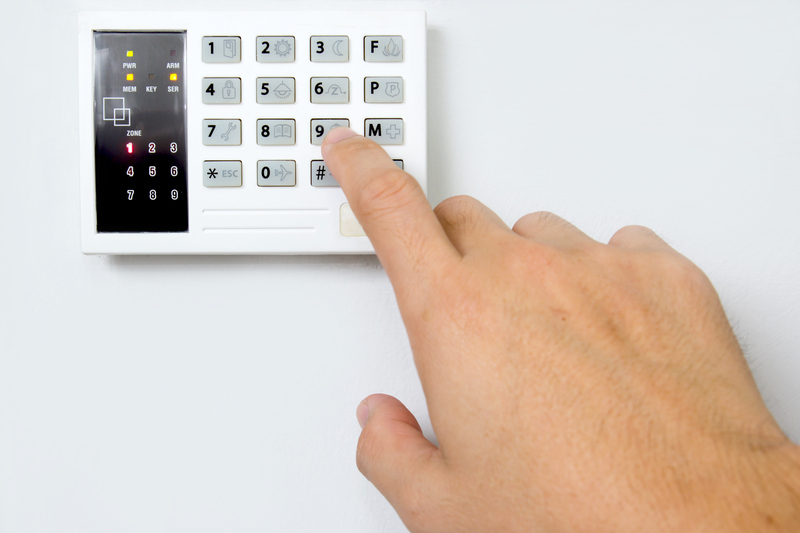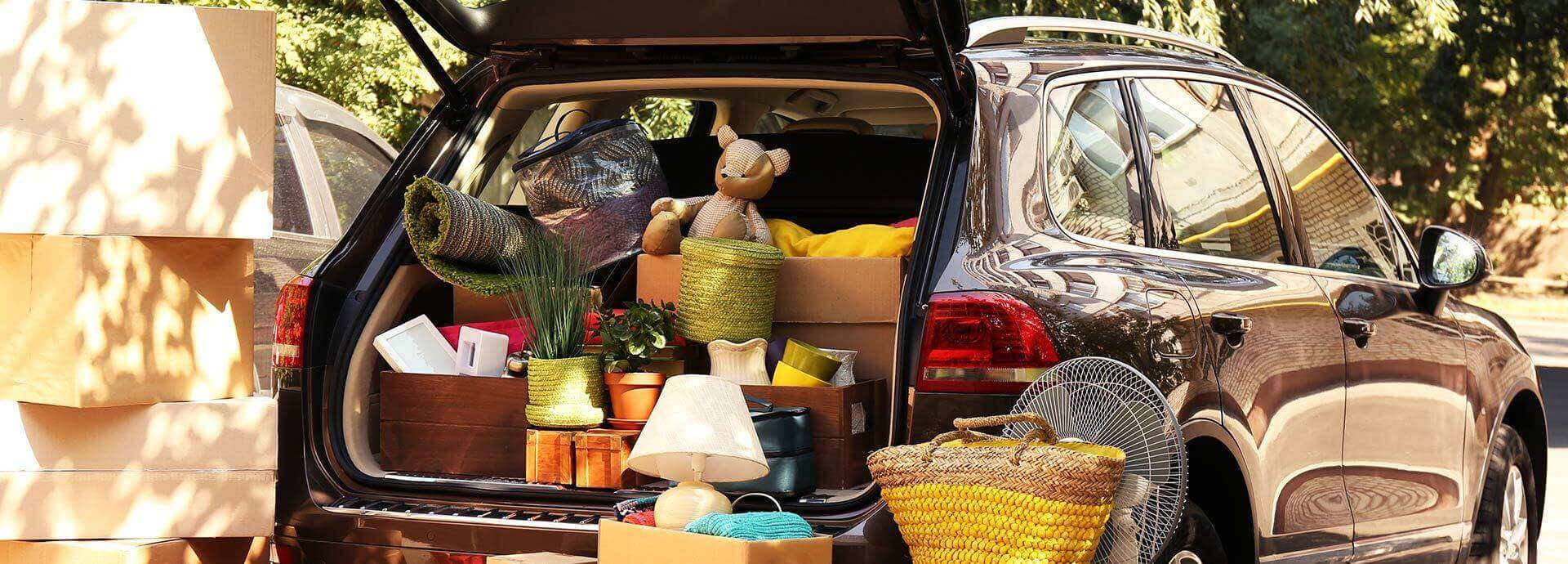Essential checklist for moving your bed and mattress
Posted on 09/06/2025
Essential Checklist for Moving Your Bed and Mattress
Preparing to move? Your bed and mattress are among the bulkiest, most essential items you'll need to safely transport to your new home. Successfully moving a bed and mattress involves careful planning, the right tools, and a strategic approach to protect your investment and ensure a good night's sleep after a long moving day. Use this comprehensive guide to navigate every stage of the relocation with minimal stress.

Why Is a Checklist Important for Moving a Bed and Mattress?
Moving a bed frame and mattress isn't as straightforward as packing boxes. These items are heavy, awkwardly shaped, and susceptible to damage. A detailed bed and mattress moving checklist ensures you don't overlook any critical steps, safeguards your belongings, and simplifies reassembly in your new space.
- Prevents unnecessary damage to your mattress and bed frame
- Streamlines the process for an efficient move
- Helps you stay organized and keeps components together
- Saves time during disassembly and reassembly
Step-by-Step Bed and Mattress Moving Checklist
1. Gather Essential Supplies
Before any action, collect the right supplies needed for safely moving your bed and mattress. Having these on hand prevents last-minute scrambles and ensures you protect your furniture.
- Mattress bags (to guard against dirt, moisture, and damage)
- Plastic wrap or stretch film for extra protection
- Moving blankets or furniture pads
- Box or store all bolts, screws, and bed hardware in labeled bags
- Wrench, screwdriver, and power drill for easier disassembly
- Packing tape and permanent marker
- Moving straps or a furniture dolly
- Bubble wrap for delicate parts (e.g., headboard embellishments)
2. Prep and Clean Your Mattress and Bed Frame
Moving is the perfect opportunity to clean both your mattress and bed frame. Dust, stains, and odors are easier to tackle before transport. A sanitized mattress and frame will also keep your new home fresh and allergen-free.
- Vacuum mattress surfaces to remove dust and debris
- Spot-clean stains with gentle fabric cleaner
- Avoid saturating the mattress with water
- Wipe down the bed frame (wood, metal, or upholstered) with a suitable cleaner
- Allow everything to fully air dry before packing
3. Disassemble the Bed Frame
Many bed frames are too large to move in one piece. Disassembling the frame makes moving safer and easier, and helps fit your bed through tight corridors.
- Remove bedding, pillows, and mattress first
- Take apart headboard, footboard, and side rails as needed
- Keep all bed hardware in a clearly labeled bag (tape it to the frame or box it)
- If your bed has slats or support rods, remove and bundle them together
- Label large pieces or take photos during disassembly for easier reassembly
- Protect fragile pieces (like tufted headboards) with bubble wrap or moving blankets
4. Protect the Mattress: The Right Way to Pack
Mattresses can be easily damaged by moisture, stains, or rough handling. Protect yours with these steps:
- Slide the mattress into a plastic bag made specifically for mattress moving
- Seal the bag thoroughly with packing tape
- If you don't have a mattress bag, wrap the mattress in plastic sheeting, ensuring all sides are covered
- Never bend or fold your mattress (unless it's designed to be folded)
- Add a moving blanket for further protection
5. Safe Lifting and Carrying Techniques
Both mattresses and bed frames are deceptively heavy. Improper lifting can result in injury or damage. Follow these tips for safety:
- Always lift with your legs, not your back
- Get help: Most mattresses are not a one-person job
- Use moving straps or a dolly for added support
- Clear the route from bedroom to moving truck, removing obstacles
- Keep the mattress upright when moving through hallways
6. Loading Your Bed and Mattress into the Moving Truck
Proper loading is essential to prevent shifting and damage during transit. Don't make the mistake of tossing your mattress on top at the last minute!
- Load the mattress standing upright along a wall of the truck (not flat on the floor)
- Secure the mattress with straps or tie-downs to prevent sliding
- Place headboard, footboard, and rails together, cushioned by moving blankets
- Do not load heavy boxes or objects on top of the mattress
- Keep hardware bags and slats together and accessible
7. Reassembling Your Bed in the New Home
Unpacking quickly means you get to enjoy the comfort of your bed after a tiring move. Efficient reassembly starts with organization:
- Unpack all bed frame pieces, mattress, and hardware first
- Reference labeled pieces or assembly instructions/photos
- Reassemble frame before placing the mattress
- Tighten hardware securely, but avoid over-tightening wood pieces
- Remove the mattress from its bag only when the frame is ready
- Allow the mattress to air out as you assemble the frame
Key Considerations for Special Mattress and Bed Types
How to Move a Memory Foam or Hybrid Mattress
Memory foam and hybrid mattresses require extra care because they are heavier and more flexible than traditional innerspring models. For these, never fold or roll the mattress unless it was delivered that way by the manufacturer. Always keep it flat or upright to avoid permanent damage to the foam layers.
Tips for Adjustable Beds and Platform Beds
Adjustable beds have electronic components that need careful handling. Disconnect all power sources and wrap cords separately. For platform beds, remove any drawers or under-bed storage before disassembly and moving.
Transporting Antique or Delicate Frames
These frames are often fragile and have intricate details. Use extra padding and consider professional movers if you're unsure about doing it yourself.
Common Mistakes to Avoid When Moving a Bed and Mattress
- Not using a mattress bag - exposes your mattress to stains, bugs, and damage
- Forgetting to label or losing small parts and hardware
- Disassembling without taking photos or notes for reassembly
- Lifting alone - risking back injury and dropping items
- Bending or forcing the mattress through small spaces
DIY vs. Professional Movers: Which Should You Choose?
Should you hire professionals or handle the move yourself? Here's what to consider:
- Professional movers have experience with large furniture and guarantee safe transport
- DIY moves can save money if you have capable helpers and the right tools
- Fragile, heavy, or valuable beds/mattresses are often best left to pros
Tip: If hiring professionals, make sure they are fully insured and experienced in moving beds and mattresses.

FAQs About Moving Your Mattress and Bed
- Can I move a mattress by myself? It's possible with smaller twin or full-size mattresses, but larger queen and king beds typically require at least two people for lifting and carrying.
- How do I protect my mattress during rain or snow? Use a waterproof mattress mover bag and double-wrap using plastic sheeting for extra security from moisture.
- Is it okay to fold my bed frame? Only some metal or collapsible frames are designed to fold. For most, full disassembly is safer.
- Are mattress bags reusable? Yes, many are made from durable plastic and can be kept for future moves or storage.
Summary: The Ultimate Bed and Mattress Moving Checklist
To recap, a successful bed and mattress move boils down to:
- Gathering all essential packing and moving supplies
- Thoroughly cleaning, disassembling, and labeling all components
- Protecting your mattress and fragile bed parts with the right materials
- Practicing safe lifting techniques and keeping pathways clear
- Using the correct loading and unloading procedures
- Efficiently reassembling your bed right away at your new place
With this checklist, you'll move your bed and mattress safely and effortlessly--ensuring restful sleep awaits you in your new home!


